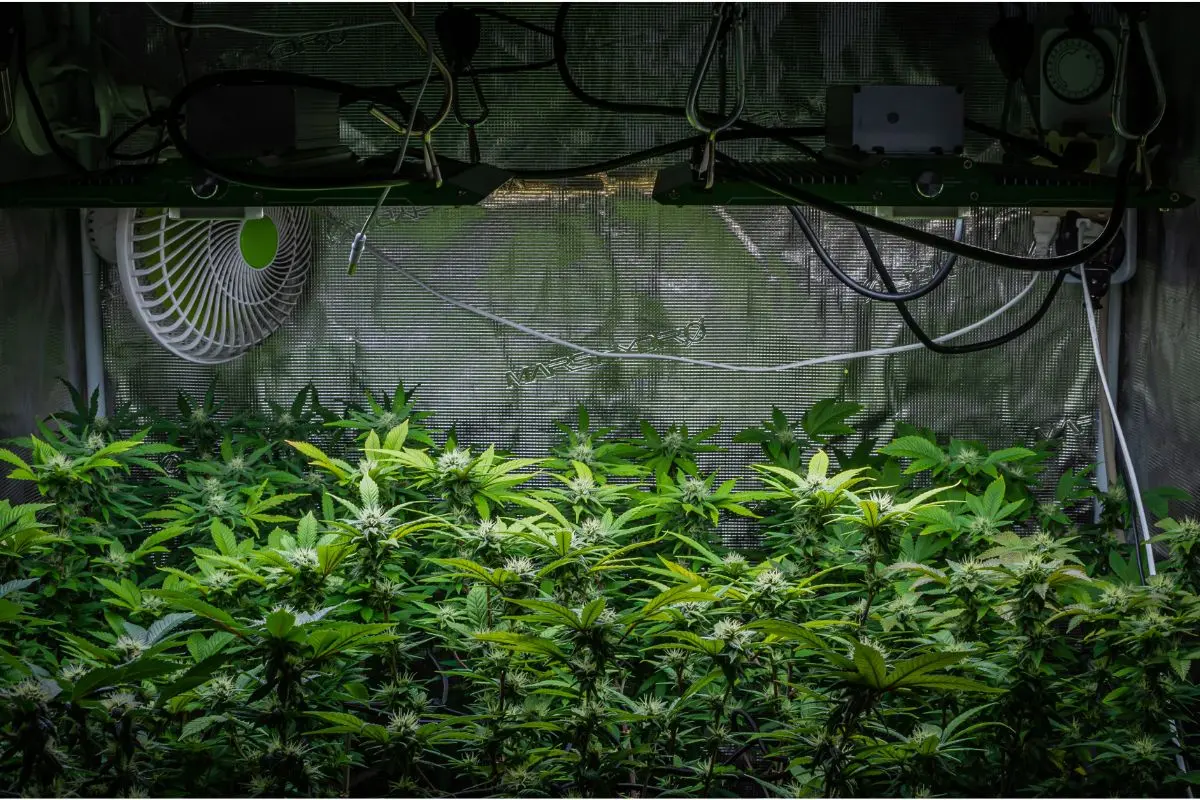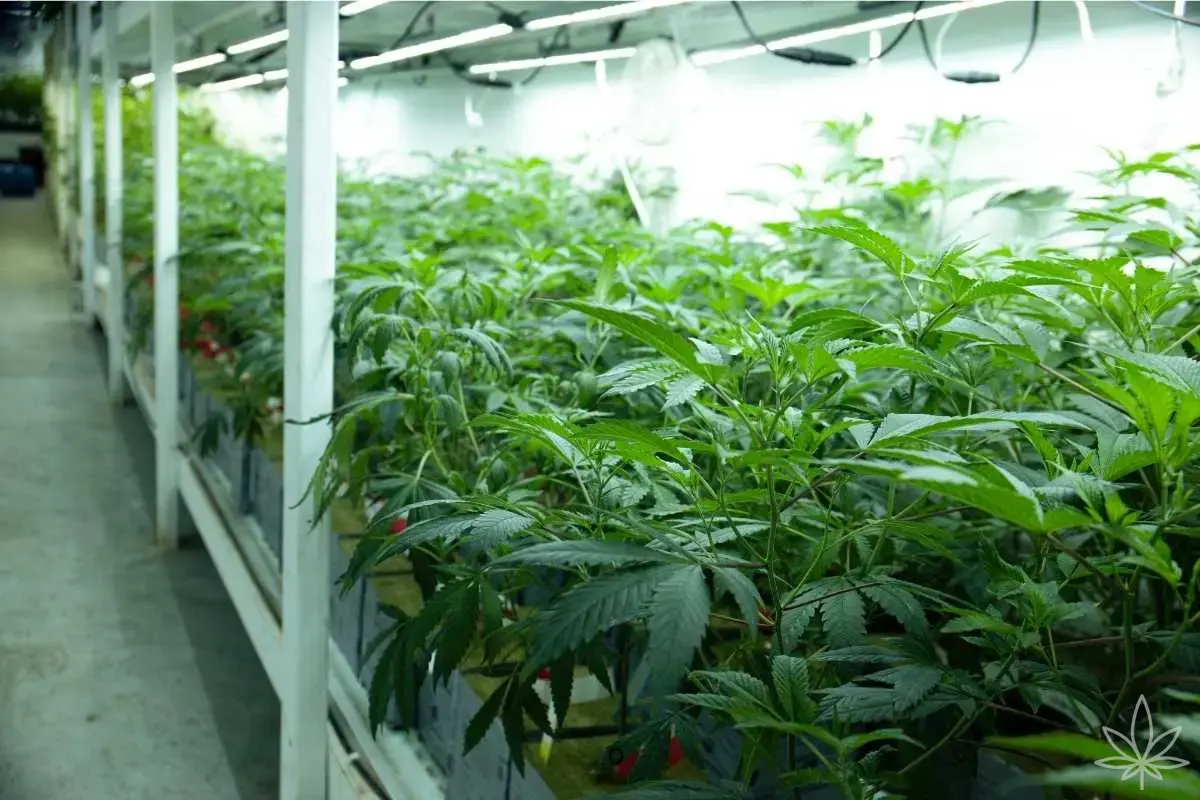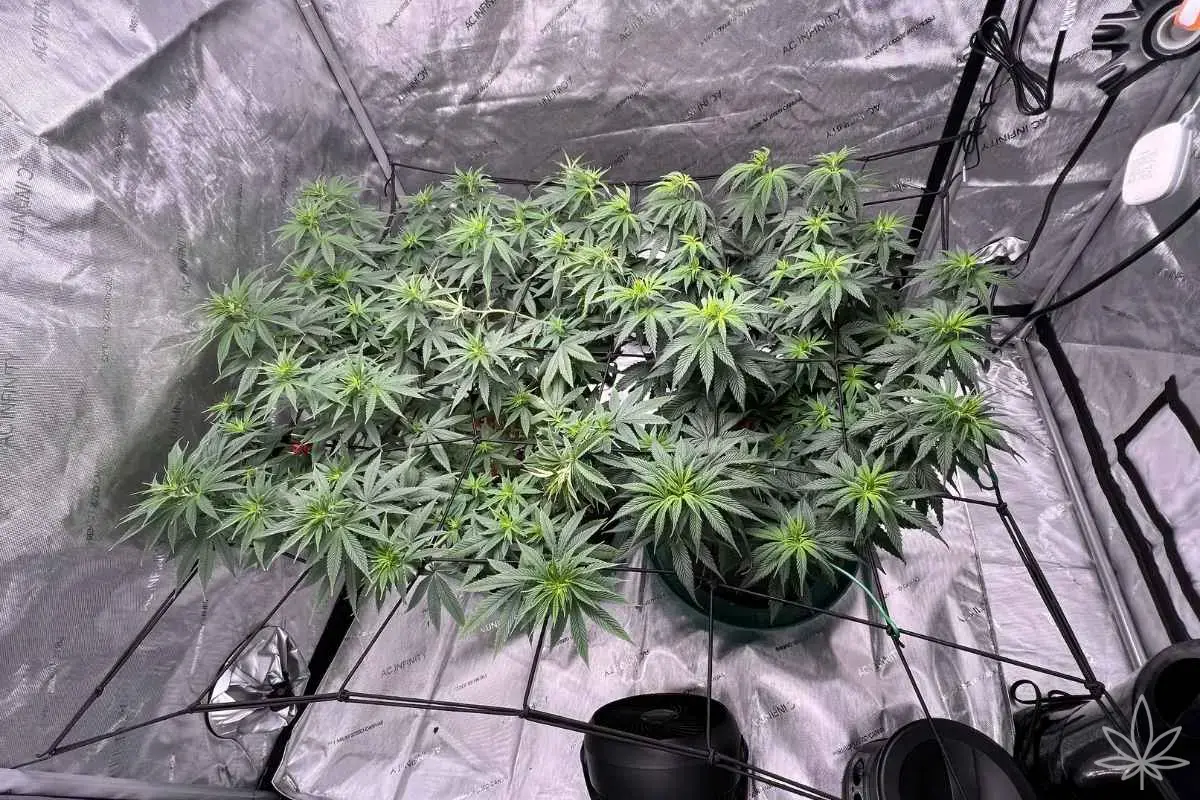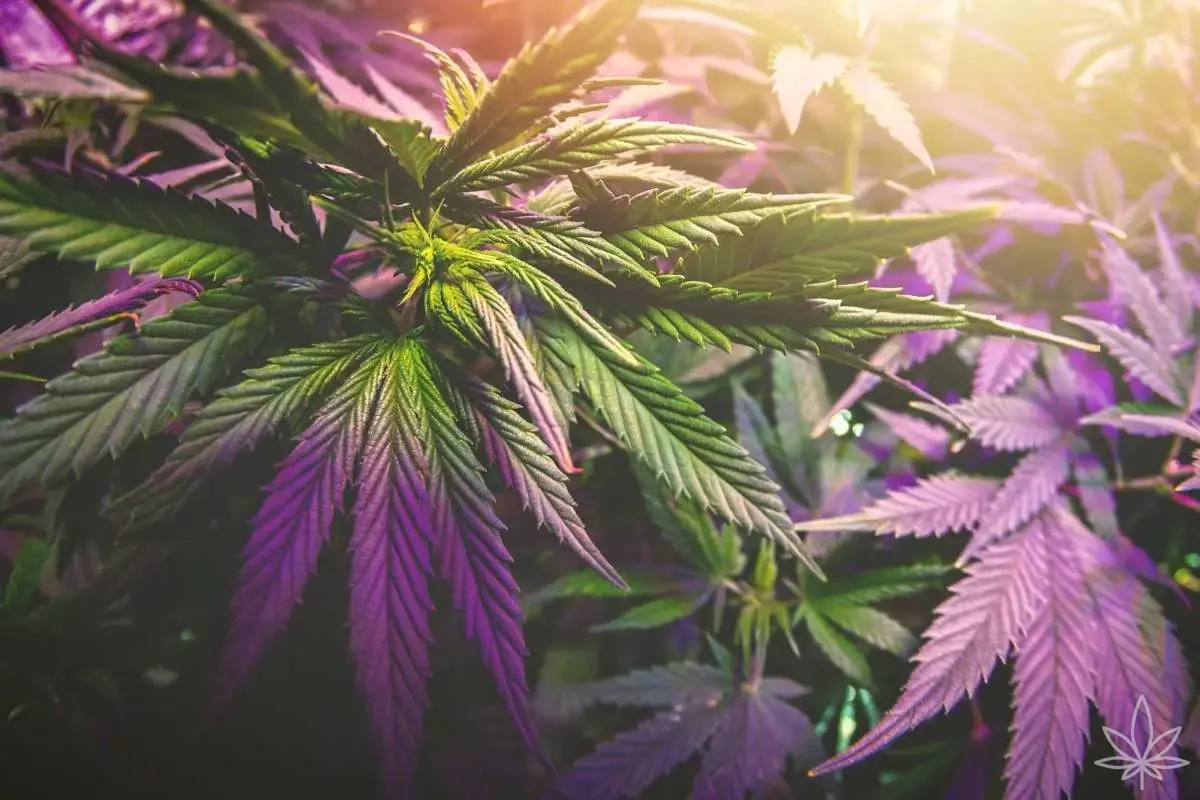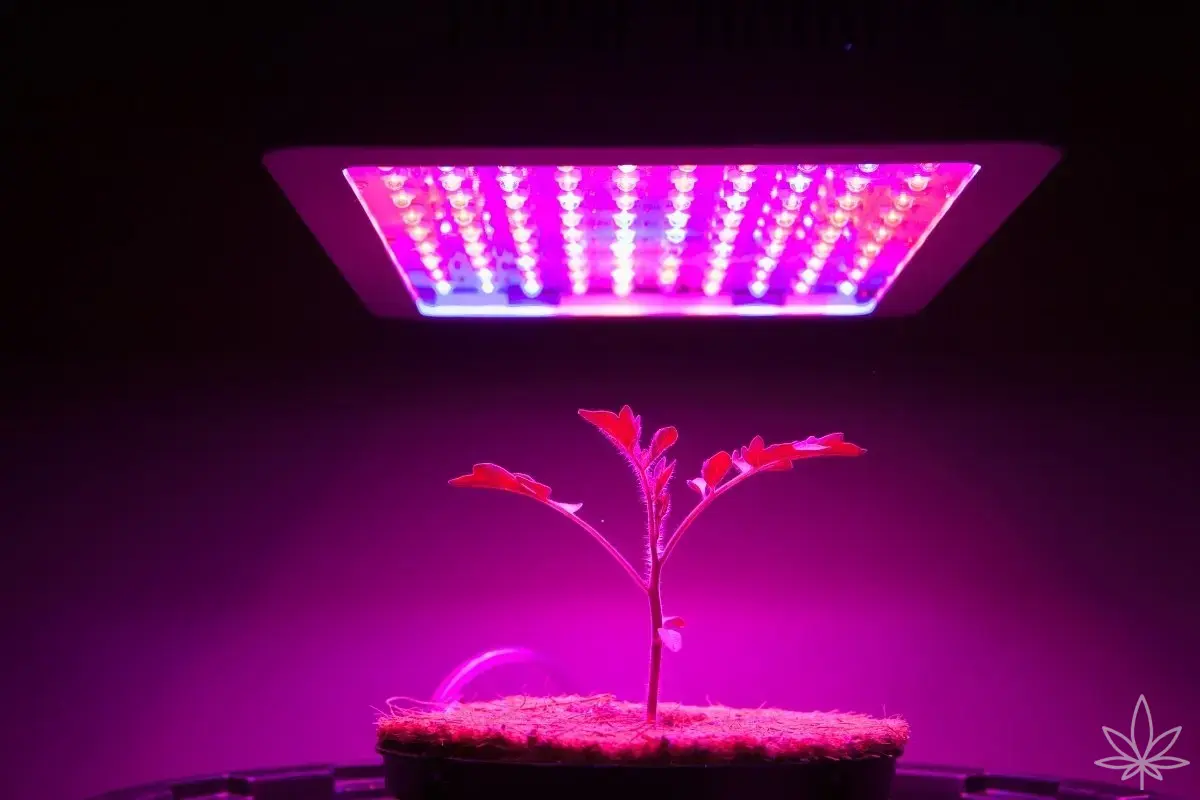Light is like nutrients: you can pour “by eye,” but only when you get a grip on the numbers do plants start saying “thank you.” PPFD and DLI sound like acronyms from a physics textbook, yet in practice they’re very down-to-earth metrics — they tell you how much light actually reaches the tops. And no, you don’t need a €300 meter. A phone, a sheet of paper, and five minutes of patience will do.
Imagine that PPFD is “sun power this second” (µmol/m²/s), and DLI is the all-day portion — the sum of those seconds wrapped into one number (mol/m²/day). In veg the portion can be spread across eighteen hours, so plants get full even with a gentler “stream.” In flower the light is on for less time (12 h), so you need to push the slider to deliver the same portion. That’s the whole magic trick.
Phone as a meter — yes, it works
The rule is simple: phone apps (Photone, Lux Light Meter, etc.) can estimate PPFD if you give them a diffuser. The simplest diffuser is… a white sheet of paper taped over the lens (seriously). Without it the phone catches hot spots and the reading will be underestimated or choppy.
Set the lamp the way you plan to run the grow, lay the phone flat at canopy height, and let the app show the numbers. We don’t look at a single spot — we make a grid of measurements. I like the “dice five”: the center and the four corners of the canopy footprint. Write the values down and calculate the average. That’s your real PPFD for plants, not for the exact tent center, which is always the brightest.
If you’ve got 80×80 cm and a 240 W LED, you’ll likely see 650–900 µmol in the center and 450–650 µmol at the edges. That spread is normal. The goal isn’t “900 everywhere,” but a sensible average and no light burn.
How much light is “enough”?
Let’s paint it with words, not a table. Seedlings and cuttings like around 200–300 µmol — they stay compact without getting “scorched by curiosity.” Veg is a comfy 300–500 µmol — leaves work, nodes stack, and you have time to train. After the flip it’s worth jumping to 600–700 µmol, and if feeding and climate are steady, you can cruise at 700–900 µmol. Going higher only makes sense once you know what you’re doing and you’re boosting CO₂ — without that the plant will start choking on excess light like on an oversized spoonful of ice cream.
And DLI: in veg they feel good at 20–35 mol/day, and in flower 30–45 mol/day. Above ~45 mol without CO₂ you’re usually fighting leaf edges and stress instead of stacking extra grams.
A little math, big decisions
We’ll calculate DLI once so you see it’s simple. The formula sounds scary, but it’s just multiplication:
DLI = PPFD × lighting time (in seconds) ÷ 1,000,000.
You’ve got 700 µmol and 12 hours? 12 h = 43,200 s. 700 × 43,200 = 30,240,000. Divide by a million and you get 30.2 mol/day. Perfect for mid flower. The same PPFD in veg (18 h) gives you 45.4 mol/day — a lot, maybe too much if feeding and VPD aren’t dialed.
That’s why in veg you don’t need to blast the ceiling. Keep 400–500 µmol at 18 h and you’ll have a comfy 26–32 mol without racing to dry out your pots.
LED distance: closer isn’t always better
Every light has its “sweet distance.” Too close — leaf edges curl like waves, veins darken, pistils in flower age faster. Too far — internodes stretch, the plant “chases the lamp.” With the phone in hand, raise or lower the fixture in small steps (2–3 cm) until the average PPFD hits the target for the given phase. If you’re short on power, don’t panic — a longer photoperiod in veg solves it, and in flower sometimes it’s enough to build the canopy better (smart defoliation, tops on a level).
What does tuning look like in real life?
A scene from an 80×80 tent. After the flip you measure and see: center 820 µmol, corners 520, average ~660. That gives ~28.5 mol at 12 h — a bit low. You nudge the dimmer up one click, average PPFD jumps to 730. DLI = 31.5 mol. Leaves not screaming? Leave it. A week later the canopy has thickened, PPFD drops to 680 (the plant “ate” some light). Gently raise the lamp 2 cm to even out the center–edge difference, and you’re back at ~700–720. And so on, step by step, until flush.
When numbers don’t match leaves
Sometimes paper says “OK,” and the plant says “no.” If edges curl even at 600–700 µmol, check VPD and leaf temperature — too dry or too hot at the tips, and even “correct” light will hurt. If shoots stretch at 400–500 µmol, the culprit is usually excess nitrogen in flower or too much lamp distance, not a lack of lumens. Light isn’t a lone island.
How much does it cost?
You’ve got the phone. A PPFD-capable app is free or costs a few–to-a-dozen euros. A basic standalone lux meter is €10–20 and works too if you apply multipliers (most apps have “white LED/HPS” profiles built in — better trust those than random charts from outer space). Add a pair of ratchet hangers for €8–15 and you’ve got the whole “tuner kit.”
PPFD/DLI targets by phase (universal)
| Phase | PPFD (µmol/m²/s) | Hours of light | DLI (mol/m²/d) |
|---|---|---|---|
| Seedlings/clones | 200–300 | 18 h | 13,0–19,4 |
| Vegetative | 300–500 | 18 h | 19,4–32,4 |
| Early flower (stretch) | 550–650 | 12 h | 23,8–28,1 |
| Mid/late flower | 700–900 | 12 h | 30,2–38,9 |
How to read: set the average PPFD for the phase, calculate DLI, then watch the leaves. If edges curl despite “correct” numbers — adjust VPD/leaf temperature or lamp distance.
Popular tent sizes — LED power and expected values
(Assumptions: modern full-spectrum LED 2.5–3.0 µmol/J, sensible optics, white walls; hanging height is indicative)
| Tent (cm) | Area (m²) | Typical LED power (W) | Average PPFD in flower (with good hanging) | Lamp height above canopy |
|---|---|---|---|---|
| 60×60×160 | 0,36 | 120–180 W | 650–800 µmol | 30–40 cm |
| 80×80×180 | 0,64 | 200–260 W | 650–800 µmol | 35–45 cm |
| 100×100×200 | 1,00 | 320–450 W | 650–850 µmol | 40–50 cm |
| 120×60×180 | 0,72 | 200–320 W | 650–800 µmol | 35–45 cm |
| 120×120×200 | 1,44 | 480–650 W | 650–850 µmol | 40–55 cm |
| 150×150×220 | 2,25 | 700–1000 W (often 2 fixtures) | 650–900 µmol | 45–60 cm |
Tip: in veg, 50–70% of the table’s power usually suffices (or keep the same PPFD but extend the photoperiod). In flower, push to 70–100%, keeping tops level — a flat canopy gives a better average than just cranking the dimmer.
Mini electricity cost calculator (approx., at 0,30 €/kWh)
| Lamp power | 12 h/d (flower) — kWh/d | €/d | €/30 days | 18 h/d (veg) — kWh/d | €/d | €/30 days |
|---|---|---|---|---|---|---|
| 150 W | 1,80 | 0,54 | 16,20 | 2,70 | 0,81 | 24,30 |
| 240 W | 2,88 | 0,86 | 25,92 | 4,32 | 1,30 | 38,88 |
| 350 W | 4,20 | 1,26 | 37,80 | 6,30 | 1,89 | 56,70 |
| 450 W | 5,40 | 1,62 | 48,60 | 8,10 | 2,43 | 72,90 |
| 600 W | 7,20 | 2,16 | 64,80 | 10,80 | 3,24 | 97,20 |
| 800 W | 9,60 | 2,88 | 86,40 | 14,40 | 4,32 | 129,60 |
(Plug in your own €/kWh rate if different — multiply kWh × price.)
Two golden rules of the “cheat sheet”
- Average > peak. Measure a grid (center + corners), not just the center — what matters is what all tops receive.
- PPFD isn’t everything. If you raise PPFD but don’t keep VPD/feeding in check, the plant will “reply” with stress instead of yield.
Finally — the philosophy of light
Instead of chasing tables, learn to listen to the plant and the numbers together. Set PPFD to a sensible level for the phase, calculate DLI, write it down. Watch the leaves, not just the screen. If everything grows evenly and you add a small, sensible step each day — you’ve won. PPFD and DLI aren’t a physics test. They’re signposts that let you be a gardener with a plan, not a fortune-teller with a flashlight.

